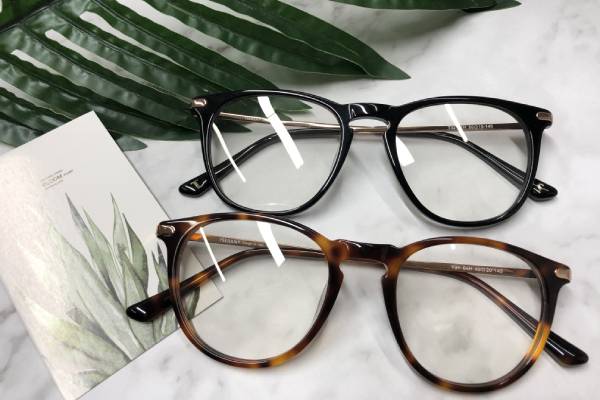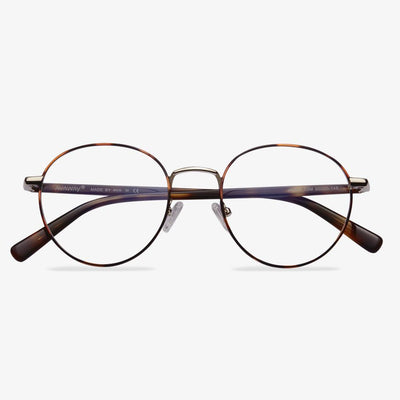How Do Prism Glasses Work?
After learning what prism glasses are, you should know how prism glasses work. So, in this section, we will show how prism glasses work.
People with binocular are struggling with seeing two images instead of a single image. The light they see falls in different places on their retinas, which causes distortion and doubling of what they are seeing.
Meanwhile, prism glasses are mostly used to deal with double vision, making it easier to maintain binocular vision, which is the ability to maintain focus on an object with both eyes. With the prism glasses, the light bent before it hits the retina. It is redirected so it falls correctly and the brain can interpret the message as getting in the usual manner, resulting in a single clear picture of seeing.
JCPenney Optical
JCPenney Optical is your one-stop-shop for all of your family's eyewear needs. Whether you need an eye exam, sunglasses, contact lenses, or a set of great frames, you'll find frames, prescription lenses, sunglasses, and contact lenses from fashion designers and trusted brands at low prices.
Disadvantages of Progressive Lens
There are deformation areas under the left and right sides of the lens, which make the image blurry and irregular. It takes 1-3 weeks to get used to it. In addition, it has a narrower field of view in the near and middle distances, and long-term concentration on the narrow focal point can easily make the eyes tired. Suitable for people who need to alternate between distant, medium, and near vision.
However, with the development of science and technology, more and more progressive multifocal glasses have emerged that have a wider field of view, more comfortable wearing, and better meet the needs of eyes. Nowadays, the use rate of progressive lenses among middle-aged and elderly people abroad is quite high. Single-lens and double-lens reading glasses are gradually being replaced by progressive multifocal glasses.
About industrial pure titanium
For the industrial pure titanium, titanium content is not less than 98%, containing a small amount of oxygen, nitrogen, hydrogen, carbon, silicon, and iron impurities such as dense metal. The labels are TA1,TA2,TA3,TA4. It's arranged by more and more impurities. The TA1 titanium content is more than 99.5%, and the price is not high. But no matter which links, for molding, welding, polishing, processing difficulty is very great.The price of almost all titanium alloys in the national standard is higher than that of pure titanium.
In reality, the price of β titanium is higher than pure titanium. Pure titanium is almost no elastic, but β titanium is not only elastic, and has the advantages of ultra-light corrosion resistance. β titanium does not have a specific composition. Memory titanium can cost tens or even tens of times as much as pure titanium.
Using memory alloy to make glasses frame is the use of its superelastic characteristics at a certain temperature (elasticity is several times that of stainless steel) and did not use its memory function. Compared to beta-titanium, memory titanium is so difficult to process. It is so elastic that shaping is difficult and impossible at room temperature, and memory titanium heat treatment is another difficult and even secret process.
What Are Computer Glasses?
Computer glasses or glasses for computer are prescription glasses that are designed to wear when doing computer work. They allow you to focus your eyes on a computer screen. There are other activities such as playing piano or shooting requiring a similar custom fitting.
Glasses for computer use are also known as blue light glasses. They block blue light that causes eye strain due to prolonged viewing of digital screens. Blue light is part of the color spectrum, and everyone is exposed to it through sunlight.
The glasses for computer use have a shorter wavelength than other colors and are emitted by electronic devices such as smartphones, TVs, computers and more. The glare from blue light is what causes digital eye strain or other symptoms. But the glasses for computer can protect your eyes from the damage of the glare.
Depending on an individual’s vision and type of work, there are several options while selecting glasses for computer use.
Monofocal: Monofocal or single-vision glasses are designed for computer work so that they provide the appropriate optical correction for the working distance between the screen and the user’s eye. These glasses allow users to view the whole screen with a minimum up-and-down head movement. However, the disadvantage of the monofocal glasses is that both distant objects and reading materials that are closer than the computer screen will appear blurry.
Bifocal: When it comes to glasses for computer screens, the bifocal glasses would be a choice. Bifocal glasses can be prescribed so that the upper segment is set up for screen distance and the lower segment for work. The disadvantage of these bifocal glasses is that it will blurry if the objects are farther away than the screen.
Trifocal: These trifocal glasses for computers have lenses that combine a segment for far vision, another for near vision and the third one for at the screen distance. The disadvantage of these glasses for computer screen is the limitation to view areas.
Metal frames are suitable for wearing.
For the eyeglass frames made of metal or alloy, after rigorous processing and gold plating, the color and luster of the surface reach a certain brightness. And it will be very beautiful to wear. Metal glasses have the benefits of solid, light, and beautiful shapes. The metal frame basically has a nose pad and the nose pad is a movable side that adapts to a variety of nose shapes. The end of the temple is covered with a plastic cover, which is beautiful and protects the skin.
The origin of modern eyeglasses
The origins of modern glasses can be traced back more than 1,000 years. In the Middle Ages, the reading stones used by monks were glass spheres, sometimes filled with water and placed on objects to magnify them.Glassblowers in Italy created reading stones, similar to modern hand-held magnifying glasses. The reading stone can be placed on the wearer's nose or in front of the face. Later, Spanish craftsmen built the first cobra-framed temple in the 17th century. They tie ribbons or strings to the frames and tie them around the user's ear.
In the 18th century, Edward Scarlett created the first wearable glasses, providing more comfort for eyewear wearers. These early glasses had glass lenses embedded in heavy frames made of wood, lead, or copper. Natural materials of leather, bone, and horn were later used to make the frames. In the early seventeenth century, lighter steel frames were invented. As eyewear continued to evolve and prescription accuracy improved, the trend for eyewear to become more fashionable began. In the 18th century, bifocal lenses appeared, making it possible to correct upper myopia and lower presbyopia. Later glasses were designed to be fixed by a ribbon or by applying pressure to the bridge of the nose. In the 1980s, plastic lenses were introduced, providing a more durable alternative to glass lenses. Ultimately, the glasses used today are the result of centuries of technological and intellectual advances.











































